
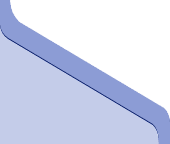 |
HISTORY OF UKRAINE
Period of Statehood (879-1360)|
Period of Lithuanian & Polish Rule (1360-1599)|
Decline of Ukrainian Statehood & Culture (1712-1783)|
Ukrainian Renaisance (1783-1913)|

Loosely translated and abridged by George Skoryk from "HISTORY OF UKRAINE" by Mykhaylo Hrushevs'kyi
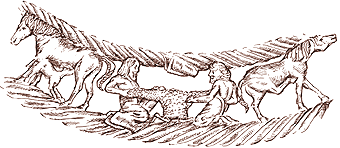
I. PERIOD PRIOR TO KYIVAN STATE.
During the Miocene Period in Tertiary Age of Cenozoic Era, some 12 million years ago, most of Ukraine was covered by sea. At the end of this period the seas receded to the approximately present day coasts of Black, Azov and Caspian seas to form one big sea. The climate was very hot and humid, lush vegetation covered the ground and there were all kinds of large animals and birds.
Then, during the Pliocene
period, some 6 million years ago, the climate began to cool. Many plants
and animals disappeared and only those, which could adapt to lower temperatures,
such as fury mammoths and rhinoceroses, remained. Later the ground froze
up and soon ice sheets covered most of the northern part of Ukraine.
That was the Pleistocene Period in Quaternary Age of Cenozoic Era, about
1 million years ago,
Commonly known as the Ice Age.
When the ice retreated,
life started to reappear. Traces of human habitation in Ukraine, dating
back at least 30 thousand years, became evident during geological excavations.
Primitive stone tools, carvings from mammoth tusks, arrow heads made
from flint stone, earthenware, bronze tools and weapons and gold jewelry
found in different layers of earth enabled geologists to
reconstruct the way of life of early man.
At first, during Old Stone Age (Paleolithic Age), humans did not have domestic animals, could not make utensils and relied exclusively on hunting and fishing. Then, gradually, during Middle Stone Age (Mesolithic Age) they began to make stone tools and weapons.
Later, during Late Stone Age (Neolithic Age), they began to make utensils from earth, kept domestic animals for milk and meat, constructed dwellings and cultivated the soil.
During the Bronze Age, about 3000 BC, and Iron Age, about 1000 BC, metal agricultural implements and weapons came into use; crafts and commerce began to develop.
From 7th century BC Greeks started to colonize the coast of the Black Sea. They traded wine, oil, and textiles, silver and gold wares and utensils with local tribes for grain and hides but they also engaged in slave trade. They introduced Greek Culture and many tribes adopted Greek customs and religion. The Greek historian Herodotus documented information about Ukraine of this period.
There were numerous tribes in Ukraine, some nomadic, some agricultural; most of the time at war with each other. The oldest known main inhabitants of Ukraine were Cimmerians. They were replaced in 5th century BC by Scythians, who ruled till 2nd century BC; Sarmatian tribes then replaced them. Later in 1st century AD the tribesmen of the dominant horde were called Alanis.

Sword and Scabbard with Boar's Head, 4th century BCE
These tribes, mainly of Iranian origin, were conquered in 2nd century AD by German tribe called Goths from Baltic region. About 370 AD, the first Asian horde of Huns, on their way to western Europe, defeated and expelled Goths from Ukraine. They were followed in 5th-6th centuries by the Bulgars and Avars.
The exact origin of Slav people is unknown, but it can be assumed that they existed for a long time before they were mentioned in historical records by Romans in 1st century AD. A very strong Slav tribe called Wends developed in 4th century; their settlements extended from central Ukraine up to Baltic Sea. When in the 6th century they moved to Southwest Germany, Antes became the dominant tribe in Ukraine.
At different times they were fighting with and against Goths, Huns, Avars, Greeks and Slovyans. Although ruled by princes, they also had people's councils and tribal elders.
According to legends, Kyiv was founded in the 5th century by three brothers Kiy, Shchek and Khoriv and their sister Lebid; later Kyiv was reigned by princes (or chieftains) Askold and Dyr.
At end of 7th century
AD, Khazars established themselves on Caspian steppes, which somewhat
shielded Ukraine from other Asian hordes. Also in the 7th century Greeks
left Black Sea shores, thus causing a considerable gap in the documented
history of Ukraine. Khazar control of the steppe was breached in the
late 9th century by the Magyars, who later were replaced by Pechenegs
and then by Polovetsians as dominant tribes.
![]()
ABRIDGED HISTORY OF UKRAINE - PART TWO.
Loosely translated and abridged by George Skoryk from "HISTORY OF UKRAINE"
by Mykhaylo
Hrushevs'kyi
II. PERIOD OF STATEHOOD (879-1360).
Prince Olekh established the Kyivan State proper in 879. He conducted military expeditions to the shores of Caspian Sea and raided Byzantine cities. Prince Ehor followed him, in 912, who not only continued external raids but also had to fight insubordinate tribes of Ulitchs and Derevlans. He died during a battle with Derevlans in 945. His wife Olha revenged his death by brutal suppression of Derevlans. In 964 she became a Christian and established her son Svyatoslav on the throne.
Svyatoslav was an able and courageous prince; he fought Asian hordes in the East and conducted raids on Bulgaria. He divided his state between his sons, then continued with his expeditions and battles. When he died in 972 during battle with Pechenegs, his sons fought between themselves, often with help from their enemies.
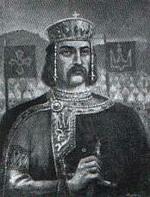 In
980, Prince Volodymyr defeated all his brothers and unified the country
into one powerful state with Kyiv as the capital. He adopted Christianity
in 988 and started to convert the population, which had up to then, worshiped
Pagan gods. Force was often used against those who resisted. He produced
silver and gold coins with his portrait on one side and the trident on
the reverse side (The trident is Coat of Arms of present day Ukraine).
In
980, Prince Volodymyr defeated all his brothers and unified the country
into one powerful state with Kyiv as the capital. He adopted Christianity
in 988 and started to convert the population, which had up to then, worshiped
Pagan gods. Force was often used against those who resisted. He produced
silver and gold coins with his portrait on one side and the trident on
the reverse side (The trident is Coat of Arms of present day Ukraine).
In History he is known as Volodymyr the Great or Saint Volodymyr. During his reign, pillaging Pecheneg hordes defeated the Khazars, pushed out the Hungarian hordes from the southern steppes and became a menace to the state. Volodymyr started to fortify Kyiv against them. After his death in 1015, fighting and assassinations between his sons ensued, resulting in victory for prince Yaroslav in 1019.
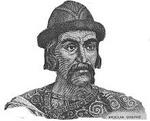 Yaroslav
the Great consolidated nearly whole of his father's territory, defeated
the Pechenegs and became one of the most powerful rulers in Europe. A
church hierarchy was established, headed (at least since 1037) by the
metropolitan of Kyiv, who was usually appointed by the patriarch of Constantinople.
Yaroslav promoted family ties with other kingdoms, built many churches,
improved Kyiv's fortifications, introduced laws and established courts.
Yaroslav
the Great consolidated nearly whole of his father's territory, defeated
the Pechenegs and became one of the most powerful rulers in Europe. A
church hierarchy was established, headed (at least since 1037) by the
metropolitan of Kyiv, who was usually appointed by the patriarch of Constantinople.
Yaroslav promoted family ties with other kingdoms, built many churches,
improved Kyiv's fortifications, introduced laws and established courts.
However, in the same
way as his forefathers, he divided the country between his sons, who
after his death in 1054, started to fight among themselves and divide
their land between their sons. This resulted in a number of small principalities
which not only fought each other, but also had to defend
themselves from marauding Turkish and Polovetsian hordes, who plundered the
countryside.
In 1097 all princes
agreed to stop fighting between themselves. In 1103 they united their
forces under leadership of prince Monomakh (one of the grandsons of Yaroslav
the Great) and defeated the Polovetsian hordes.
However, the constant warfare weakened the country's economic strength and
caused a near collapse of cultural and political system of Ukraine.
After death of Monomakh
in 1125 Ukraine remained fragmented into the numerous principalities,
each having their own customs and rules, with only
nominal allegiance to the Prince of Kyiv ( this position was occupied by sons
of Monomakh on rotational basis). Gradually Kyiv lost it's power and influence;
many principalities separated. An outstanding chronicle of events was compiled
in Old Church Slavonic language by Venerable Nestor in 1136.
In 1169 prince Andrey Bogolyubski conquered and destroyed Kyiv and established his capital in Vladimir near present site of Moscow, thus originating present Russian state.
The Ukrainian princes
continued to struggle on against the Polovtsi.
One particular battle led by Prince Ehor in 1185 was enshrined in a poem
"Slovo o Polku Ehorevim" (The Tale of Ehor's Regiment).
Western parts of Ukraine - Halych (Galicia) and Volynj (Volhynia)—free from Polovetsian raids, gradually emerged as leading principalities. Prince Roman ruled there in 1199. His sons succeeded in uniting both principalities into one rich and powerful state.
About year 1220, when
a new horde of Mongols and Tatars invaded
Ukraine, the princes have reached some sort of accommodation with Polovtsi
and fought together to expel this new horde. They succeeded at first but, toward
the end of year 1240, Tatars returned and besieged Kyiv. On 16th December 1240
they conquered, plundered and ruined the city. Afterward they moved westward,
plundering Halych, Poland and Hungary then in 1245 they returned and occupied
eastern Ukraine.
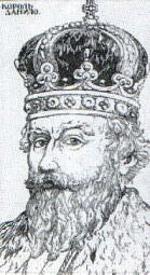 Meanwhile,
Prince Danylo (son of Prince Roman) established himself in Halych and
his brother Vasylko in Volynj. Together they managed to keep the Tatars
away from their principalities. Danylo founded city Lviv in 1250 as a
defense site against Tatars. In 1253 he accepted the royal crown from
the pope and effected a short-lived church union with Rome.
Meanwhile,
Prince Danylo (son of Prince Roman) established himself in Halych and
his brother Vasylko in Volynj. Together they managed to keep the Tatars
away from their principalities. Danylo founded city Lviv in 1250 as a
defense site against Tatars. In 1253 he accepted the royal crown from
the pope and effected a short-lived church union with Rome.
After Danylo died in 1264, his sons continued to rule in peaceful coexistence with the Tatars. In 1303 they created a separate archbishopric office in Halych, responsible to Byzantine. Earlier, in 1299 Kyivan archbishopric seat was moved to Moscow.
The dominant prince was Danylo's son Lev. He died about year 1300. His son Yuriy would again unite the Halych and Volynj principalities with Lviv as the capital. He was seen as a mighty and just ruler and the country was rich and peaceful under his rule.
After Yuriy, his two sons ruled until 1320. They both died without leaving male successors. This created an unstable situation and an internal power struggle ensued, which was exploited by neighboring countries—Poland, Hungary and Lithuania—in their efforts to occupy this part of Ukraine. Local boyars and People's Councils tried to resist by accepting princes from other dynasties and countries and by forming alliances with the Lithuanians and even the Tatars, but to no avail. In 1349, Polish king Kazimyezh managed to occupy Halych and part of Volynj. About same time, Lithuanian princes intensified their takeover of eastern principalities of Ukraine. Finally about year 1360, the Prince of Kyiv was overthrown.
Ukraine was partitioned
between Poland and Lithuania with Tatar Golden Horde remaining in some
parts of southern steppes and the Crimea.
![]()
ABRIDGED HISTORY OF UKRAINE - PART THREE.
Loosely translated and abridged by George Skoryk from "HISTORY OF UKRAINE"
by Mykhaylo Hrushevs'kyi
III. PERIOD OF LITHUANIAN AND POLISH RULE (1360-1599).
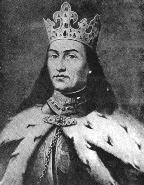
Grand Duke Vytautas the Great
The Lithuanian princes were reasonable rulers. In some cases they were assimilated
where they adopted the local customs, language and religion. People did
not resist them and appreciated their protection from Poland, Moscow and
the Tatars. However, under Polish rule, western Ukraine was subjected to
exploitation and colonization by an influx of people from Poland and Germany,
who were taking over the property and offices from local boyars.
During the period of 1393-1430 the Grand Dutch of Lithuania was ruled by the Grand Duke Vytautas, who also is named Vytautas the Great for all the political and military achievements he brought to Lithuania. During his reign, the push eastward by the German Order was broken. In 1410 Vytautas, along with his cousin Yahaylo the King of Poland, won the Battle of Grunwald (Germany), against the might of the Order that way finishing almost 200 years of war. He also brought the Christianity to the pagan Lithuania. At the end of his era, Lithuania became one of the strongest states in Europe, stretching from the Baltic Sea to the Black Sea.
In 1400 Lithuania, together with its Ukrainian principalities, separated under king Vytautas- Yahaylo's cousin. Yahaylo’s younger brother, Svytryhaylo, opposed this arrangement. Ukrainian principalities under Vytautas were loosing their national character and independence to Polish influences.
In 1413 a decision was made to allow only Catholics to occupy important government positions ("Horodlo Privilege"). Wide-spread discrimination against the Orthodox population followed. Nearly all Ukrainians in those days were Orthodox, therefore Ukrainian princes and boyars ended up helping Svytryhaylo in his fight with Vytautas. After Vytautas died in 1430, Svytryhaylo defended himself from Poles, but by the year 1440 his sphere of influence was reduced to the Volynj principality.
There was a period of hostilities between Lithuania and Moscow, when about 1480 Moscow annexed several principalities in eastern Ukraine. Also several popular uprisings took place. In 1490, a rebellion under Mukha, occurred in western Ukraine. Mukha sought help from neighboring Moldova. In 1500 in eastern Ukraine, there was an uprising under Prince Mykhaylo Hlynskiy, who expected help from Moscow and the Tatars. However Poland and Lithuania, at that time, were very strong and all uprisings were squashed.
Meanwhile, in the South, marauding Tatar hordes converted a large area of the country into wilderness, without any law or order. It was a very rich part of Ukraine with productive soil, wild animals and rivers full of fish. It attracted many adventurous people, who although they had to fight the Tatars there, would be free from suppression by the Polish and Lithuanian overlords. They began to organize under Hetmans, thus originating Cossack society.
To defend themselves from the Tatars, they constructed forts called "Sitch" and amalgamated them into a sort of union, with Zaporizhia as a centre. It was downstream of the Dnipro river cascades.
In 1552, one of Ukrainian princes, Dmytro Wyshnevetskyi, being among the Cossacks, built a castle on the island Khortytsya. From there, the Cossacks conducted raids on Crimean towns sometimes with help from Moscow. Dmytro wanted to develop Zaporizhia, with help from Lithuania and Moscow, into a powerful fortress against Tatars and Turks. Being unable to achieve this goal, he left Zaporizhia in 1561, became involved in a war in Moldova and was captured and executed by the Turks in 1563.
In 1569, with the Union of Lublin, the dynastic link between Poland and Lithuania was transformed into a constitutional union of the two States as the Polish-Lithuanian Commonwealth. Most of Ukraine became part of Poland. The settlement of Polish nationals followed and Polish laws and customs became dominant.
Polish nobles replaced most of Ukrainian princes and boyars, except for a few—notably Ostrozkyis and Wyshnevetskyis. Peasants lost their land ownership and civil rights and gradually became serfs, exploited as manpower in agriculture and forestry, by the new landowners. Suppression of the Orthodox Church retarded the development of Ukrainian literature, arts and education. Preferential treatment of Catholics inhibited the economic and political advancement of Ukrainians.
In spite of that there was a modest revival of Ukrainian culture later in 16th century. Church schools and seminaries were set up, based at first on the properties of Ukrainian magnate Hryhoriy Khodkovych and later on the holdings of Ostrozkyi princes. A printing industry began, culminating in the publication of the Bible in a print shop ran by Ivan Fedorovych. Trade and church brotherhoods sprang up. Schools were established and hospitals became centers of defense of the Orthodox Church and the fight for justice and equality.
Such a situation was the main cause, which multiplied the influx of people to Cossack territory, increasing the Cossack’s strength. The Tatars were pushed out into Crimea and the Cossacks became more daring in their raids on Turkish cities.
While Ukrainian Cossacks defended not only Ukraine, but also the whole of eastern Europe from the Turks and Tatar hordes, they were causing diplomatic problems for Poland because Turkey used Cossack situation as an excuse for wars against Poland. When Cossack leader, Ivan Pidkova, conquered Moldova in 1577, the Poles captured and executed him in order to appease the Turks. They tried to control the Cossacks by recruiting some of them into the Polish military system as, so called, Registered Cossacks, but they could never really tame them.
With decreasing danger
from the Tatars, Polish nobles and Ukrainian princes loyal to the king,
were granted possessions in territory controlled by the Cossacks and
began to introduce their freedom limiting, unpopular laws. Dissatisfied
with such treatment Cossacks, under Kryshtof Kosynskyi, rebelled about
1590, and by year 1593 controlled most of eastern Ukraine. After Kosynskyi,
Hryhoriy Loboda became Cossack Hetman in 1593.
Another section of Cossacks, numbering about 12000, under Semeryn Nalyvayko,
were recruited by the Pope and the German Kaiser for war against theTurks.
They conquered Moldova and in 1595 returned to Ukraine to fight against Polish
rulers and to defend the Orthodox population from the Jesuits, who were instigating
amalgamation with the Catholic Church. In 1596 at a synod of Brest, the Kyivan
metropolitan and the majority of bishops signed an act of union with Rome.
The Uniate church thus formed recognized supremacy of the pope but retained
the Eastern rites and the Slavonic liturgical language.
Also in year 1596 Polish king, Sigismund III Vasa, ordered Field Marshal Stanislav Zholkewski to subjugate the Cossack forces. After several months of fighting, Zholkewski surrounded Cossacks, led by Nalyvayko, Loboda and Shaula, at river Solonytsya near Lubny. There were about 6000 Cossack fighters and just as many women and children facing a much more superior force. The prolonged siege, lack of food and fodder, internal squabbles (Loboda was killed in one the fights between sections of Cossacks) and intensive cannon fire destroyed defenders' capacity to resist. In order to save their families, Cossacks agreed to Zholkewski's terms to let them go free in exchange for handing over their leaders. However, after surrender, the Poles did not keep their word; they attacked and started to massacre defenseless and disoriented Cossacks. Only a section under leadership of Krempskyi broke through and joined with troops of Pidvysotskyi, who were coming to the rescue of the besieged Cossacks.
Zholkewski, exhausted
by prolonged fighting, decided to abandon the idea to conquer the Cossacks.
He returned to Poland, where he tortured and
executed
the captured Cossack leaders. The most severe punishment
was handed to Nalyvayko, who was tortured for about a
year prior to a brutal execution.
![]()
ABRIDGED HISTORY OF UKRAINE - PART FOUR.
Loosely translated and abridged by George Skoryk from "HISTORY OF UKRAINE" by Mykhaylo Hrushevs'kyi
IV. Cossack PERIOD (1599-1711).
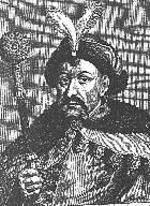
Bohdan Khmelnytskyi
Although Zholkewski failed to destroy the Cossacks, he left them considerably weakened and divided, often fighting among themselves. Hetman Samiylo Kishka united all the Cossack forces and, after leading them in a successful naval expeditions against the Turks and land raids on Moldova. This helped to restore the former Cossack spirit and power.
In 1599, the Polish king, having difficulty with a war with the Walachians in Moldova, had to rehabilitate Cossacks in order to secure their help. Later he would use them in a war with Sweden. Kishka died in one of the battles with the Swedes but the Cossacks continued to fight under the other hetmans. When this war ended in 1603, Cossacks demanded and obtained equal status with the Polish military units and secured authority over large area of Ukraine adjacent to the Dnipro river.
Cossack power continued to grow with raids on lands controlled by Moscow—by helping the numerous pretenders for Moscow throne (1604-1613)—and the Black Sea expeditions, in their boats called Chaykas. These took place on coast of Turkey, Crimea and the mouth of Danube in Moldova (1613-1618). Each 'Chayka' was manned by about 60 Cossacks and was armed with 4 to 6 cannons. With fleets of between 30 and 80 Chaykas, the Cossacks destroyed or captured many Turkish galleons and plundered Turkish cities during times when the whole of Europe was trembling against the might of the Turkish Empire.
It is estimated that the number of Cossacks fluctuated between 10,000 and 40,000 depending on circumstances. Their centre was the Sitch—an armed camp in Zaporizhia, located "beyond the cascades" of the river Dnipro. The Cossack Army was divided into regiments, consisting of between 500 and 4000 men, led by colonels. Each regiment had its own banner, trumpeter and drummer. Regiments were divided into companies of 100 men led by captains which were further subdivided into 'kurins' of 10 men led by 'atamans'. There was also a small artillery force and orchestra. The Commander in Chief was a hetman, elected by and responsible to Cossack Council called the Rada.
In the spring of 1618 hetman Petro Sahaydachnyi with force of about 20,000 Cossacks marched on Moscow, conquering many towns and fortresses on the way. Near Moscow he joined up with Polish forces under prince Wladyslaw, who pretended for Moscow throne. They failed to capture Moscow, but managed to secure peace terms favorable to Poland.
The Poles, no longer
endangered by its enemies, again turned their attention to pacification
of the Cossacks. Sahaydachnyi wanted to avoid hostilities and in 1619
agreed to reduction of Cossack force to 3,000. This did not please Zaporozhtsi
(Cossacks in Zaporizhia), who then replaced Sahaydachnyi by hetman Borodawka.
Sahaydachnyi, who retained control of Cossacks on the mainland, dedicated
himself to promotion and defense of Ukrainian culture and
Orthodox faith by diplomatic means; Borodawka continued with traditional raids
on Turkey.
When, in 1620, Poland
got into difficulties in war with Turks (in Moldova the Polish army was
defeated and Zholkewski killed), Poles again called on Cossack help.
Borodawka was keen to oblige but Sahaydachnyi, pointing out the unfair
treatment of Ukrainians, tried to restrain the Cossacks until they received
a better deal from the Polish king. However, the Cossacks became impatient
and under Borodawka marched on Moldova to fight the Turks. They lost
many men and blamed it on Borodawka's inefficient leadership and strategy.
When Sahaydachnyi returned from his negotiations with the king, the Cossacks
dismissed, tried and executed Borodawka and elected Sahaydachnyi as
hetman of all Cossacks.
In 1621 a big battle against the Turks took place on the South side of the Dnister River near Khotyn with participation of 40,000 Cossacks and 35,000 Polish soldiers. It ended with the retreat of the Turkish army. Cossacks got full credit for this victory but very little in way of compensation and again the Poles insisted on the reduction of their numbers.
Sahaydachnyi, wounded
in Khotyn battle, died on 10th April 1622. Under his successors Cossacks
continued to defend Orthodox faith, resisted exploitation of Ukrainian
land and peasants by the Polish landowners and terrorized the Turks with
their raids across Black Sea. Polish king, although unable to suppress
the Cossacks, continued with a policy of conversion of the Ukrainian
population to Catholicism by persecution of people of the Orthodox faith.
In 1924 Orthodox Church authorities asked Moscow for help but Moscow
was not strong enough to get involved in hostilities with Poland.
Later, in 1624, the Cossacks secured an unexpected alliance with the Crimean
Tatars, who rebelled against the Turkish sultan. While the Turks sailed against
the Tatar rebels, the Cossacks twice raided Constantinople and plundered both
shores of Bosphorus. They then returned and helped the Tatars to expel the
Turks from Crimea, thus securing friendly neighbors in their struggle against
Turks and Poles.
Unfortunately, in 1625, when many Cossacks were away on one of their maritime expeditions against the Turks; Polish hetman Konietspolski attacked and forced Cossack hetman Zhmaylo to accept terms, whereby the Cossack register was to be reduced to 4,000 men. The Cossacks did not like this compromise and replaced Zhmaylo by hetman Doroshenko. Doroshenko was a capable leader and administrator and maintained a reasonably peaceful relationships with Polish authorities. He even managed to restrain 'unregistered' Cossacks from raids on Turkey. However when Turks attacked Crimea, the Cossacks went to help the Tatars and Doroshenko fell in one of the battles there.
Succeeding Cossack hetmans continued to uphold peaceful conditions until 1629 when Konietspolski returned from war with Sweden and settled his soldiers on Ukrainian land, who started to make trouble. He also tried to eliminate the 'unregistered' Cossacks.
In the spring of 1630,
Cossacks from Zaporizhia led by hetman Taras Fedorowych went on the march
and caught up with the Polish forces and the
'registered' Cossacks stationed in Korsun. The Cossacks from Korsun went over
to Fedorowych, citizens rebelled and the Polish soldiers had to flee. This
signaled a general uprising, which eventually turned into a war in defense
of the Orthodox faith.
The reaction of the Polish administration was brutal and widespread. Konietspolski enlisted a notorious hood, Lashch, to attack and massacre people in churches, towns and villages. However, this made the Cossacks, and Ukrainian population at large, more determined to get rid of the Polish yoke.
A decisive battle took
place in mid 1630 near Peryaslav where the Polish forces suffered a major
defeat and Konietspolski had to make peace with the Cossacks.
After death of Polish king Sigismund III Vasa (in April 1632) Ukrainian nobles
and politicians intensified their efforts to gain a better deal for Ukraine
by diplomatic means. The new king, Ladislas IV, was more sympathetic to their
cause, mainly in order to counteract the influence from Moscow on Ukrainian
scene. Although the Catholic Church and the landowners resisted any concessions,
Ukrainians managed to make some progress in spiritual and cultural fields under
the newly elected archbishop Petro Mohyla.
The new king appreciated
the Cossack's potential and used them in wars with Turkey, Moscow and
Sweden. The Cossacks proved themselves to be just as efficient fighters
on the Baltic Sea as on the Black Sea; but the polish senate did not
want war with Turkey and constructed a fortress called Kodak near Zaporizhia
in order to block the Cossack access to the Black Sea. This fortress
was destroyed by Cossacks led by hetman Sulyma in 1635, but 'registered'
Cossacks, in order to avoid retaliation, captured Sulyma and handed him over
to the Poles. In spite of his distinguished service in war with Turks and efforts
of the king and pope to save him, Sulyma was executed and his body was cut
up and hung on four corners of Warsaw streets.
The betrayal of Sulyma did not gain Cossacks much reward from Poles. This led to an uprising under hetman Pavliuk in 1637, but Polish field marshal Pototski suppressed it. Another unsuccessful attempt to overthrow Polish occupation was made by the Cossacks, in 1638, under hetmans Ostryanin and Hunya. After that the Cossack movement fell under Polish control, Kodak fortress was rebuilt and it appeared that the Poles might have finally gained unchallenged domination of Ukraine.
A lengthy period of peace, which followed, made it easier for the Poles to maintain control over Ukraine. Cossacks were no longer needed as a defense force. The Polish senate and nobles managed to curtail king Ladislas' ambitions for aggressive wars. Polish soldiers were on hand to keep a lid on the simmering discontent of the Ukrainian population.
Deprived of protection from the Cossacks, peasants were exploited on land as serfs, city dwellers were reduced to a state grudging conformity. Political, cultural and religious matters were under Polish control and commerce was predominantly in hands of Jewish merchants, storekeepers and innkeepers.
An incident in 1646 started a chain of significant events with great consequences. The farm of Cossack captain, Bohdan Khmelnytskyi, was destroyed and his family harmed by local government officials in Subotiv. Angry and distraught, Bohdan decided to organize an uprising. Conditions for it were very ripe, and in 1647 Kmelnytskyi went to the Sitch where he was elected as Cossack hetman. Fueled by rumors of imminent war, volunteers streamed to Zaporizhia to join the free Cossack forces. This alarmed Polish authorities and an army, which included 'registered' Cossacks was sent to restore Polish control. However these Cossacks went over to Khmelnytskyi and the Polish force was annihilated on the steppes near Zaporizhia in May 1648. Cossack victories, with popular support continued. Even the Tatars, who were dissatisfied with their treatment by the Poles, joined in. Marching westward, the main Cossack force reached and besieged the city of Lviv and the fortress town Zamostc. Practically the whole of Ukraine fell under Cossack control.
In the meantime king Ladislas IV died and his brother king Casimir V made peace with Cossacks, agreeing to all their demands. Victorious Khmelnytskyi with his army retreated and in January 1649 entered the Ukrainian capital of Kyiv to a triumphal acclaim as liberator. When the king's emissaries arrived in Kyiv they insisted that Ukraine must remain part of Polish Kingdom and offered only to increase number of 'registered' Cossacks and concessions to the Orthodox Church. This angered Khmelnytskyi because he now wanted full independence and freedom for all Ukrainian people. He told the emissaries that he would liberate the whole of Ukraine and said, "standing on the river Vistula I will say 'sit there and be quiet Poles' and I will expel all dukes and princess beyond the Vistula and if they start to bolt I will even find them there for sure". He then set out to create an independent Ukrainian Cossack State.
In response the Polish army marched on Ukraine. After encountering a large force of Cossacks and Tatars they retreated to a strong fortress Zbarazh and were besieged there. Cossacks near Zboriv blocked their reinforcements. The Poles where nearly defeated there but were saved by the Tatars, who defected from the Cossacks after generous promises from the Poles. Faced with the combined force of Poles and Tatars, Khmelnytskyi had to settle for the increase of the Cossack register to 40,000 and concessions to the Orthodox Church only (Treaty of Zboriv in Aug 1649).
This did not satisfy the Ukrainian population and soon Khmelnytskyi had to fight again for their freedom. After coaxing the Tatars again over to his side he defeated the Polish army at Korsun in 1650. However later he was again betrayed by the Tatars and in August 1651 had to make another agreement with Poland, this time decreasing Cossack register to 20,000 and without concessions to the Orthodox Church.
This agreement was treated by Khmelnytskyi only as a period of respite and in spring 1652, with Tatar participation, he went on the march again. After a period of bloody and exhaustive battles and another betrayal by the Tatars, Khmelnytskyi decided to seek help from Moscow. In January 1654 he met with emissaries from Moscow in Peryaslav who promised help in defense of Ukraine from Poland if the Cossacks swore allegiance to their tsar. An agreement was reached based on set of conditions, which in effect guarantied Ukraine independence, connected to Moscow only by virtue of common monarch. It worked well in a military sense as the Poles were expelled from Ukraine and Belarus, however there was no consensus in the political sphere. Ukrainians wanted relationships with Moscow as equal, independent partners, whereas Moscow considered Ukraine as an acquisition of another country by its growing empire.
Khmelnytskyi was very
disappointed by such attitude and behavior from his allies and began
to look around for other friends. In 1655 Swedish king Karl X requested
and obtained Cossack help in his war with Poland. When the Swedes occupied
northern Poland, the Polish king made peace with Moscow and tried also
to attract the Cossacks over to his side. But Khmelnytskyi, because of
previous experience with Poland and Moscow, decided to stick with Sweden
and at the beginning of year 1657 resumed hostilities with Poland. Unfortunately
Khmelnytskyi got very sick and the Cossacks led by colonel Zhdanovytch,
unable to achieve any significant victories, returned home. Khmelnytskyi
died on 27th June 1657. See also:
http://www.encyclopediaofukraine.com/display.asp?AddButton=pages\K\H\KhmelnytskyBohdan.htm
He wanted his son to succeed him but, as Yurasj was yet to young and inexperienced. The Cossacks elected Ivan Vyhowskyi as their hetman. At first Vyhowskyi conducted a neutral policy toward Poland, Moscow and Sweden but eventually, aggressive behavior of Muscovites on Ukrainian territory pushed him toward Poland. In September 1658, in Haydach, he signed an accord by which Ukraine fell under jurisdiction of the Polish king, albeit as an autonomous country.
With help from Poland and the Tatars, Vyhowskyi defeated Moscow’s forces in Ukraine, but in September 1659 a large section of Cossacks rebelled, accused Vyhowskyi of trying to sell Ukraine to Poland and elected Yurasj Khmelnytskyi as their hetman. Soon all Cossacks united under Yurasj and forced Vyhowskyi to resign. After entering into another treaty with Moscow, the Cossacks and the Russians, in the summer of 1660, marched on Poland. However this campaign did not go very well and when the Russian forces were defeated, the Cossacks had to submit to another union with Poland.
Although Ukrainians resented Moscow domination, Polish authorities failed to capitalize on it and did nothing to gain popular support. The Cossacks on Leevoberezhie (Left Bank), that is on the east side of river Dnipro, went over to the Moscow side; Yurasj Khmelnychenko resigned in 1663 and his place was taken by Pawlo Tererya. Tererya was a Polish supporter therefore he could not extend his authority to the Left Bank where the Cossacks elected hetman Ivan Brukhowetskyi.
At the beginning of 1665 the Cossacks overthrew Teterya, thus freeing territory on Pravoberezhie (Right Bank), that is on the West Side of the river Dnipro, from Poland. Unwilling to come under Moscow domination the Cossacks turned for support from the Tatars by electing Petro Doroshenko as their hetman In 1667, by the treaty of Andrysovo, Ukraine was partitioned along the Dnipro River: the western side (Right Bank) went under Polish control, while the eastern side (Left Bank), including Kyiv, became the autonomous hetman state or Hetmanate under Russian protectorate. Zaporizhia still remained under independent Cossack rule, who elected their own chieftains and followed their own impetuous policies.
On the Right Bank, Doroshenko accepted Turkish sultan Mohammed IV as his superior in exchange for help to liberate Ukraine from domination by Poland and Moscow. Later, in the spring of 1668, the Cossacks on the Left Bank rebelled against Moscow resulting in the whole of Ukraine coming under the control of Petro Doroshenko. Unfortunately later in 1668, when Doroshenko was occupied with a family matter, the Russians attacked and once again the Left Bank fell under their domination, with Demyan Mnohohrishnyi as hetman of Cossacks of that part of Ukraine. Polish forces also invaded Ukraine from West but, in the spring of1671, the Turkish sultan sent in a large army and helped Doroshenko to expel the Poles from western Ukraine.
Doroshenko then started negotiations with Mnohohrishnyi about unification of Ukraine. This did not please Moscow; Mnohohrishnyi was tried (on trumped up charges) and sentenced to exile. The new Left Bank hetman Ivan Samoylowytch was hostile to Doroshenko and, with help from Moscow, marched on Right Bank Ukraine. He received a considerable support there because the Turks and the Tatars antagonized the population by trying to promote their Muslim religion.Doroshenko was this time unable to obtain help from Turks as they were busy in war with Poland and retreated to his holding of Chyhyryn. On 15th March 1674. Samoylowytch was proclaimed hetman of the whole Ukraine under a Moscow protectorate.
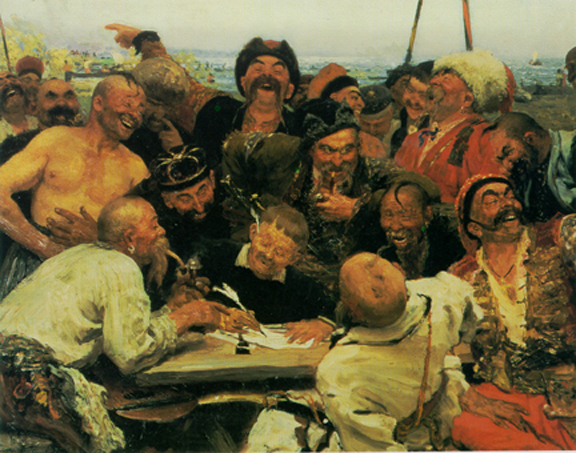
This is one of the best known and loved paintings in Russia and Ukraine. It shows the Cossacks of Zaporozh'e composing as insulting a reply as possible to a Turkish demand for surrender (1675).
Doroshenko was ready to surrender but after receiving support from Zaporozhtsi, encouragement from Poland and help from Turks decided to keep on fighting against Samoylowych and his Russian backers. This war, with raids and plunders by Turks, Tatars and Poles caused a mass exodus of people from the west to the Left Bank. Abandoned by his people Doroshenko surrendered in September 1676.
The Turks then recalled
Yurasj Khmelnychenko, who continued to struggle for the Right Bank until
1681, when the Turks replaced him by the Walachian
Warlord Duky. In 1683 the Right Bank was taken over by the Poles under Yan
Sobyeski, who was supported by the Cossacks in a war with the Turks, which
figured significantly in the rescue of Vienna in 1683. For their services,
Cossacks were rewarded with land grants in southern Ukraine. People then began
to return from the east, which further helped Sobyeski to fight the Turks.
But still, the Cossacks resented Polish supremacy and Paliy, with the other
Cossack Colonels, planned an uprising and unification with the Cossack on the
Left Bank.
Over there Samoylowych tried to avoid anything which may displease Moscow, but at the price of continuing loss of independence. The Uniate church disappeared and the Orthodox Kyivan metropolitanate itself was transferred in 1986 from patriarchal authority of Constantinople to that of Moscow. Arts and education progressively lost its traditional Ukrainian character. Also granting them land possessions ensured loyalty to Moscow by some of the Starshyna (senior Cossack officers), which led to renewed exploitation of peasants.
Samoylowych himself started to adopt autocratic style of rule and even wanted to introduce his dynasty, which antagonized most of the Cossack Starshyna. Therefore, when in 1686 Moscow joined with Poland in war with Turkey, they blamed Samoylowych for the failed expedition against the Tatars in Crimea. Samoylowych was exiled to Siberia, where he died two years later.
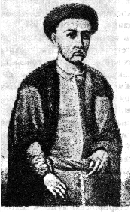 On
25th July 1687 Ivan Mazepa was elected as new Cossack hetman. For the
first few years Mazepa continued with policies of his predecessor; also
built and renovated churches and monasteries. Literature, art and architecture,
in the distinctive Cossack Baroque style, flourished under his patronage
and the Kyivan Mohyla Academy, the first Ukrainian institution of higher
learning, experienced its golden age.
On
25th July 1687 Ivan Mazepa was elected as new Cossack hetman. For the
first few years Mazepa continued with policies of his predecessor; also
built and renovated churches and monasteries. Literature, art and architecture,
in the distinctive Cossack Baroque style, flourished under his patronage
and the Kyivan Mohyla Academy, the first Ukrainian institution of higher
learning, experienced its golden age.
However he neglected needs of peasants and ordinary people, who bore the brunt of Moscow’s domination. Attempted uprisings by Petryk took place between years 1693 and1696. He gained support from the Tatars but failed to gain the support of the Cossacks. Eventually a Cossack, for monetary reward from Mazepa, assassinated him. However discontent continued and population started to shift to Zaporizhia and to the Right Bank, where colonel Paliy was looked upon as a peoples hero due to his successes in uprising against Poles.
In 1695 Moscow restarted war with Turkey and Crimea and the Cossacks had to fight wherever Tsar Peter sent them to. The Tatars exposed Ukraine to devastating raids. In 1700 Tsar Peter joined Poland in a war with Sweden in order to gain access to the Baltic Sea and the Cossacks had to march to the distant north, were many of them died in battles and from brutal treatment by the officers from Moscow. They were also used as manual labor in the construction of fortifications. To make things worse, arrogant Russian regiments were pillaging Ukrainian towns and villages and abusing not only general population but also Cossack leaders.
All this disturbed Mazepa and he began to have few second thoughts about his alliance with Moscow. By the end of 1705 the war with Sweden went bad and in 1706 Swedish king Karl XII concluded peace with Poland thus leaving Moscow alone in this war. Consequently Tsar Peter ordered Mazepa to defend Ukraine without help from Moscow and to destroy the Polish nobles on the Right Bank, who supported the Swedes.
Mazepa used this opportunity to take over this part of Ukraine. But there was a popular Cossack colonel Paliy. Mazepa solved this problem by inviting Paliy to his place, where he was imprisoned and handed over to Tsar Peter, who sent him to Siberia for collaboration with the Swedes.
At the end of 1707 Tsar Peter ordered Mazepa to hand over the western lands to Poland. Mazepa did not obey, using all possible excuses to retain control of that part of Ukraine. While still pretending to be faithful to Tsar Peter, he conducted secret negotiations with Swedish and Polish kings. When in autumn of 1708 king Karl approached Ukraine and promised help in liberation from Moscow, Mazepa decided to switch sides. Unfortunately Moscow became aware of this plot before Mazepa could organize and inform the Cossacks and the population in general about the reasons and the advantages of his plan. Tsar Peter moved swiftly on Ukraine, destroying most of Mazepa's supplies and armaments and ruthlessly eliminated the people suspected of collaboration with Mazepa and the Swedes. He started extensive rumors that Mazepa intended to return Ukraine to Polish domination.
This resulted in most Cossacks siding with Moscow and they subsequently elected a hetman submissive to Moscow—Ivan Skoropadskyi. The church stayed also on Moscow's side. Only Cossacks in Zaporizhia came out in support of Mazepa and his remaining four thousand troops.
The superior Muscovite forces routed Zaporizhia in May 1709 and next month, supported by Cossacks, loyal to Moscow, defeated Mazepa and theSwedes in a battle near Poltava. Heartbroken Mazepa fled to Moldova where he died on 22nd August 1709.
Mazepa supporters did
not give up hope of liberation from Moscow. In April 1710 they elected
Orlyk as their hetman and continued the struggle, with the help from
Sweden, Poland and Turkey for many years to come. They also drafted many
interesting resolutions concerning a proposed Ukrainian government, based
on democratic principles. See also:
http://www.encyclopediaofukraine.com/featuredentry.asp
http://www.encyclopediaofukraine.com/display.asp?AddButton=pages\M\A\MazepaIvan.htm
Loosely translated and abridged by George Skoryk from "HISTORY OF UKRAINE" by Mykhaylo Hrushevs'kyi
V. DECLINE OF UKRAINIAN STATEHOOD AND CULTURE (1712-1783).
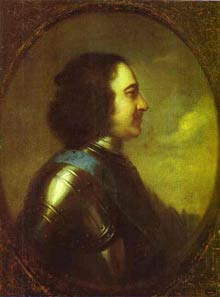 After
the defeat of Mazepa, Tsar Peter intensified his efforts to subjugate
Ukraine. Hetman Skoropadskyi had his powers restricted by Russian supervisors.
His residence was transferred from Baturyn to Hlukhow near the Russian
border, where two Russian garrisons were stationed to ensure his loyalty
to Moscow.
After
the defeat of Mazepa, Tsar Peter intensified his efforts to subjugate
Ukraine. Hetman Skoropadskyi had his powers restricted by Russian supervisors.
His residence was transferred from Baturyn to Hlukhow near the Russian
border, where two Russian garrisons were stationed to ensure his loyalty
to Moscow.
The Ukrainian population
became burdened by the plundering of the Russian military units, dispersed
throughout the country. Cossacks were sent to work on the construction
of canals near St Petersburg, connecting the river Volga with the
Baltic Sea. Thousands of Cossacks died from hunger, exhaustion and sickness.
Russian nationals replaced many Cossack colonels.
In 1722, the Tsar appointed a council called the "Little Russian Collegiate", which was controlled by senior Russian officers and headed by brigadier Velmyaninow, to monitor and audit the hetman's activities and decisions. This, for practical purposes, transferred all powers to the Russians, leaving the Cossack hetman and his officers only with empty titles. Hetman Skoropadskyi was very upset by such situation; he became ill and died in 1722. Tsar Peter used this opportunity to abolish the office of hetman altogether. He directed the Cossack colonel Polubotok to perform the hetman's duties under the supervision of Velmyaninow and refused to agree to Cossack requests to the election of a new hetman.
The Russian occupiers continued to persecute and impoverish the Ukrainian population. They kept sending more Cossacks to work on construction of the canals, connecting the Caspian Sea with the Baltic Sea. From 1721 to 1725, some 20,000 Cossacks perished.
Polubotok was an honest and energetic man. He managed to improve law and order within the Cossack establishment and to improve the living conditions of the population. However this did not please the Russian authorities, who relied on disorder and corruption to maintain their grip on Ukraine. They feared Polubotok's growing popularity and his efforts to re-establish the Hetmanate.
Velmyaninow complained to the Tsar that Polubotok was not complying with his directives. Consequently Polubotok was arrested and interrogated under torture in Petropavlowsk fort, near St Petersburg. He died there, as a martyr for the Ukrainian cause in the autumn of 1724, in spite of the Tsar's belated efforts to save him and to reconcile with the Cossacks.
Tsar Peter died soon after, at the beginning of year 1725. Ukraine was thus left at the mercy of Velmyaninow and his henchmen. As for the Cossack colonels, some were imprisoned near St Petersburg and the others, who were not already replaced by Russians, kept quiet.
His wife Catherine succeeded
Tsar Peter. Faced with a possible war with Turkey, she needed the Cossacks
and wanted to return to them some of their former freedoms. However she
faced a stiff opposition from the "old guard" in the Russian
government, consequently the Cossacks received only few minor concessions.
Catherine died in the spring of 1727 and the grandson of
Tsar Peter, Peter II became the newemperor of Russia.
The new Russian government sacked Velmyaninow and his "Little Russian Collegiate", released the Cossack colonels from jail and appointed 70-year-old Danylo Apostol as Cossack hetman. On 1st October 1727 the Cossacks formally accepted Apostol in a ceremonious election in Hlukhow. Although reporting to Russian "resident" Naumow, the new hetman managed to carry out considerable improvements in Ukrainian situation. His loyalty to Moscow was ensured by the presence of one of his sons who was a virtual hostage in St Petersburg.
Tsar Peter II died in 1730 and his aunt Tsarina Anna became the new ruler of Russia. When hetman Apostol fell ill and became paralyzed, she refused to hand over his powers to the Cossacks and ordered a Russian "resident", Prince Shakhowski to form a council, consisting mainly of Russians, to take over. Hetman Apostol died in January 1734 and later in that year the Zaporozhtsi in the Sitch decided to come over from the Turkish to the Russian side.
With Ukraine becoming almost a province of Russia, the russification of political, religious and cultural life intensified. Intermarriages with Russians were encouraged and any efforts to regain independence were brutally suppressed. Cossack colonels were kept under constant observation and subjected to house searches at the slightest sign of disloyalty. Even any attempts to obtain justice were punished; when, in 1737, Kyiv's city counselors tried to defend their rights against Russian excesses, they were all jailed. Things were so bad, that when in 1740 an English general Keith was temporarily appointed in place of a Russian administrator, people were amazed by his human behavior and tolerance.
Times were hard for the top layer of Ukrainian society, but even harder for middle and lower classes and peasants, who suffered most from Russian exploitation. Cossacks were being forced to fight for Russia against the Turks, Tatars and Poles for small rewards, and often for nothing. Under such circumstances, the yearning for the return of the Hetmanate autonomy persisted. The possibility of this would happen occurred after the end of war with Turkey in 1740 and death of Tsarina Anna in 1741.
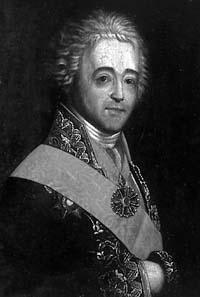 The
short regency of Anna II was terminated by a palace revolution, whereupon
the daughter of Peter I, Elizabeth was installed on Russian throne. Elizabeth
was sympathetic to Ukrainian cause because, prior to becoming Tsarina,
she befriended and fell in love with a handsome son of a Cossack court
choir singer, Oleksiy Rozumowskyi. She married him after her coronation.
While visiting Kyiv in 1744, she agreed to promote the Cossacks' request
to re-install the hetman's office and proposed Oleksiy's younger brother
Kyrylo Rozumowskyi for this position. Twenty year old Kyrylo, who studied
abroad, returned in 1746, married into the royal family and was bestowed
with many orders and titles.
The
short regency of Anna II was terminated by a palace revolution, whereupon
the daughter of Peter I, Elizabeth was installed on Russian throne. Elizabeth
was sympathetic to Ukrainian cause because, prior to becoming Tsarina,
she befriended and fell in love with a handsome son of a Cossack court
choir singer, Oleksiy Rozumowskyi. She married him after her coronation.
While visiting Kyiv in 1744, she agreed to promote the Cossacks' request
to re-install the hetman's office and proposed Oleksiy's younger brother
Kyrylo Rozumowskyi for this position. Twenty year old Kyrylo, who studied
abroad, returned in 1746, married into the royal family and was bestowed
with many orders and titles.
Kyrylo Rozumowskyi
In 1747 the Russian senate was requested to take steps toward the re- establishment of the Hetmanate. In February 1750, the ceremonious formality of election of new Cossack hetman took place in Hlukhow, followed by celebrations and festivities.
In the spring of 1751 hetman Kyrylo Rozumowskyi, again with great ceremony and parade was installed as hetman. Unfortunately, being brought up in St Petersburg, Rozumowskyi was a stranger to Ukraine and the ways of life there. His Russian advisor Teplow was unsympathetic to Ukraine's newly won autonomy and did all he could to hinder its development. Rozumowskyi himself was bored with life in Ukraine and preferred to spend most of his time in St Petersburg.
During this period,
Ukraine was divided into several parts such as Left Bank consisting of
the Hetmanate, Slobidshchyna and the Zaporozhian Sich, The Right Bank,
consisted of Halychyna (Galicia), Wolhynia, Bukovyna and Transcarpatia.
The Hetmanate included areas around Poltava, Lubny, Peryaslav,
Kyiv, Nizhyn, Chernihiv, Hlukhiv and also areas, around Starodub, Pochep and
Mhlyn. The neighboring areas centered around Kharkiv were called Slobidshchyna
meaning free (from serfdom) lands also referred to as Sloboda Ukraine. They
included Izyum, Balakleya, Akhtyrka, Sumy and, areas around Bilhorod, Ostrohozhsk
and Sudza.
Originally adventurous people, who tried to establish themselves free from Polish and Russian domination, settled these lands. They formed Cossack regiments for protection from the Tatars and for some time was able to lead an independent life, because they served as a buffer from the Turks and the Tatars. However later they fell under direct Russian rule; the autonomy of Loboda Ukraine was abolished under Catherine II in 1765.
To ensure lasting domination over these two parts of Ukraine, Russians tried to suppress the Ukrainian culture. They disallowed Ukrainian language in books, schools and theaters. Moscow controlled the church and government and the only way for a person to advance was to speak Russian and to be loyal to Moscow.
While Ukraine on the east side of Dnipro (Left Bank) was being russianized, the western Ukraine consisting of Galicia Wolhynia and Bukovyna (areas around Lviv, Ternopil Lutsk and Chernivtsi) was under the Polish influence. Polish authorities were preventing not only national, but also economic development of the Ukrainians. The Orthodox Church was being gradually taken over by Polish dominated Catholic Church.
Between western Ukraine
and, the Russian dominated parts on the east side of the Dnipro, was
a large territory on the Right Bank, partly de-populated by the recent
wars involving the Cossacks, Poles, Russians, Turks and Tatars.
Gradually, the Polish nobility began to return, reclaimed their landholdings
and started to exploit Ukrainian peasants as serfs. The resistance to this,
at first, was in the form of outlaw gangs, said to have robbed the rich to
help the poor. Some of the gang leaders were even considered as folk heroes,
such as Olexa Dowbush, who operated between 1738 and 1745. There were also
uprisings by the so-called Haydamaks, generally during hostilities between
Poland and Russia.
The biggest uprising was in 1768. The Haydamaks, led by Maxym Zaliznyak and Ivan Honta, captured Umanj and killed many Polish oppressors and their Jewish collaborators. They expected help from their Orthodox "brothers" from Russia. However Russians made peace with Poland, captured Zaliznyak, Honta and many other Haydamaks and handed them over to the Poles. Those, who were not immediately tortured and executed, were tried in Kodno and sentenced, in most cases, to death.
The Transcarpathian Ukraine (areas around Uzhhorod and Mukachiv) was under Hungarian rule. Overwhelmingly rural in character, Transcarpathia had a Ukrainian—Ruthenian peasantry, a powerful Hungarian nobility and a substantial number of urban and rural Jews. The Ukrainian population there did not display much enthusiasm for independence but managed to retain their language, customs and religion.
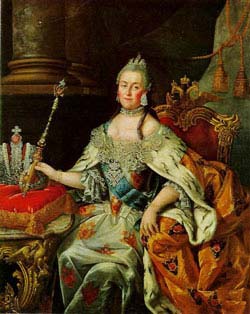 Tsarina
Katharine II, who ruled Russia from 1762, after short reign of her husband
Peter III, decided the cancellation of the Hetmanate. Hetman Rozumovskyi
resigned and, in his place, on November 1764, Tsarina
Tsarina
Katharine II, who ruled Russia from 1762, after short reign of her husband
Peter III, decided the cancellation of the Hetmanate. Hetman Rozumovskyi
resigned and, in his place, on November 1764, Tsarina
re-installed the "Little Russian Collegiate", under the presidency
of Graf Rumyantsev. Rumyantsev's policy was to eliminate all remaining traces
of
Ukrainian autonomy and separatism; to introduce serfdom of peasants and to
integrate Ukraine with Russia. The Cossacks and the population resisted this
at large.
In 1767 the Tsarina ordered the election of deputies from all parts of the Russian Empire in order to be informed what kind of government the people wanted. The deputies from Ukraine declared their desire for Hetmanate autonomy. This angered Rumyantsev and he sent out his officers to persuade the electors to elect deputies supporting his government. People who resisted were jailed. However in spite of all efforts of Russian authorities, the popular sentiment for return of the Hetmanate system continued.
In 1772 Galicia and,
two years later, Bukovina were annexed to the Austro Hungarian Monarchy,
which had somewhat improved the conditions of the
Ukrainians. In 1774 the Uniate church (renamed to Greek Catholic church) was,
by imperial decree, equalized in status with the Roman Catholic Church. Educational
reforms in 1775 allowed for instructions in the Ukrainian language. However
on balance government policies favored the Poles.
The Cossack stronghold, the Zaporozhian Sitch, was subservient to Moscow and was utilized for raids on Crimea and Turkey. During the Turkish war, which started in 1768, several thousand Cossacks supported the Russians in battles on land and Sea. Their efforts were rewarded by eulogies from the Tsarina but little else and restrictions of the Cossack freedoms continued. Their lands were being colonized by Russians, Serbians and other foreigners with aim of creation of so called Novorossiya or the New Russia state in the south of Ukraine.
After end of the Turkish war in 1775, the Cossacks were being gradually disarmed and in the Summer of that year, Russian general Tekeli surrounded the Cossacks in the Sitch itself with a superior force and demanded abandonment of their fortress. Faced with such overwhelming odds, the Cossack chief Kalnyshevskyj surrendered. The Sitch was destroyed and abolished by Tzarist edict of 3rd August 1775.
Kalnyshevskyj and other
Cossack leaders were exiled to Siberia. The Cossack lands were granted
to Russian nobles; Cossacks were told to disperse and settle in towns
and villages or to join Russian forces. Many Cossacks escaped and settled
in Turkey near the Danube delta. In 1778 they were formally accepted
under Turkish rule. By end of 1780 all districts, which were formerly
under the Hetmanate, were incorporated into Russian regime. In 1783 all
Cossack regiments were transferred to Russian forces; peasants were prohibited
to leave their landlords, which made them serfs on their former land.
Ukrainian church autonomy was abolished and church property was transferred
toRussian treasury.
![]()
ABRIDGED HISTORY OF UKRAINE - PART SIX.
Loosely translated and abridged by George Skoryk from "HISTORY OF UKRAINE" by Mykhaylo Hrushevs'kyi
VI. UKRAINIAN RENAISANCE (1783-1913).
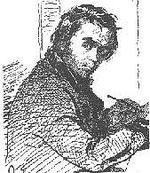
Taras Shevchenko - Self portrait.
As a result
of the partitions of Poland (1772, 1793, 1795), Ukraine became occupied
by two empires—Russian and Austrian. Galicia, Bukovyna and Carpathian
Ukraine were incorporated into the Austro-Hungarian (Habsburg) Empire
and the rest of Ukraine became part of Russia. These two totalitarian
powers had strong central governments, mighty armies and powerful police
ready to suppress any attempts by Ukrainian population to regain freedom
and self determination. Nevertheless conditions under Austria began to
improve, whereas life under Russian occupation deteriorated. Because
of this, the renaissance of Ukrainian culture and political activities
began in western Ukraine.
WESTERN UKRAINE UNDER THE HABSBURG MONARCHY
In 1772, Galicia and, two years later, Bukovina were annexed to the Austro-Hungarian
(Habsburg) Monarchy. In 1774 the Uniate church was renamed to the Greek Catholic
church and equalized in status with Roman Catholic Church. Educational reforms
in 1775 allowed for instructions in Ukrainian language. However, on balance
government policies favored the Poles. Led by church activities, schools with
Ukrainian language began to develop. The new bishop of Mukachiv, Andriy Bachynskyi
(1772-1809), assembled many learned people, who later together with graduates
from Vienna university became professors in Lviv University (founded in 1784).
Some subjects were taught in the Ukrainian language. However, after death of
kaiser Joseph in 1790, the Polish nobility increased their influence on the
Austrian authorities and, by spreading rumors of Ukrainian sympathy toward
Russia, caused the replacement of Ukrainian by the Polish language in state
schools. Only private schools were allowed to use the Ukrainian language. Some
Ukrainian clergy resisted this trend, notably metropolitan Levytskyi, under
influence of canon Ivan Mohylnytskyi, author of "Information about Ukrainian
Language", which defended use of Ukrainian language.
The first group defending Ukrainian culture was formed in 1820. A big impetus
to academic activities was provided by fierce polemics during the 1830s between
supporters of the popular spoken language and supporters of the old printed
church language. The proponents of old church language were Mykhaylo Luchkay
and Yosyf Levytskyi; in defense of the spoken popular language were Yosyf Lozynskyi
and a group of young students of Lviv Seminary.
Most prominent in Ukrainian literature were, so called "Ruthenian Triad":
poet Markian Shashkevych (1811-1843), professor of Ukrainian language Yakiv
Holovatskyi and historian, ethnographer, linguist Ivan Vahylevych. They were
treated with suspicion and animosity by the Austrian authorities. Their first
publication in 1834 "Zorya" (The Star) was banned, Their second publication-a
collection of folk songs and stories, "Rusalka Dnistrova" (Dnister
Mermaid), published in Hungary, was confiscated and not released till 1848,
after death of Markian Shashkevych.
Many changes came in 1848. Revolutions in Europe affected the circumstances
within Austrian Empire. There was a flurry of liberal reforms: the end of censorship,
a promise of a national constitution and the end of serfdom in Galicia. To
counter Polish ambitions for independence, Austrian authorities began to lift
restrictions on the Ukrainian culture. In the autumn of 1848 the Congress of
Ukrainian Scientists was created to promote exclusively Ukrainian culture and
to plan activities such as establishment of a standard grammar for Ukrainians
under Austria and Russia. Stirred by fiery poems of Antin Mohylnytskyi, they
demanded the introduction of Ukrainian language in schools and universities
and separation of the Ukrainian part of Galicia, centered around Lviv from
the Polish part centered around Krakow.
The year 1848 was a turbulent year for Ukrainians under Austria. In their drive
for self-determination they had to contend not only with Austrian authorities
but also with Poles in Galicia, Rumanians in Bukovyna and Hungarians in Carpathia.
In the end, aspirations for independence of Ukrainians and other nationalities
within Austrian Empire were, for the time being, kept under control. It was
the beginning of quiet reaction to the authoritarian regimes of Austria and
Russia.
While in Russia, Ukrainians were accused of siding with Poland, Polish activists
convinced Austrian authorities of Ukrainian sympathy toward Russia. This resulted
in Polish dominance of culture and politics in Galicia. Faced with such situation
many Ukrainians started to think that maybe the only salvation was with Russia;
they were called Moscowphiles or Russophiles. They were ready to sacrifice
Ukrainian national identity for support from Russia against the Poles, Rumanians
and Hungarians and promoted the idea of one Russian nation from the Carpathian
Mountains to Kamchatka. Among them were even former Ukrainians patriots such
as Yakiv Holovatskyi, who was professor of Ukrainian language in Lviv University.
But there were also many who remained steadfastly on pure Ukrainian ground,
mainly energetic elements of youth, but also some members of the old generation.
They keenly absorbed fiery poems of Taras Shevchenko and read books of other
writers from eastern Ukraine such as Panteleymon Kulish, Marko Vovchok, Volodymyr
Antonovych, Konysjkyi and Levytskyj-Nechuy. They guarded the survival of Ukrainian
politics, culture and language by means of publications such as "Vechernytsi" (Evening
Times) (1862), "Meta" (Destination) (1863-1865), "Nyva" (Field)
(1865), "Rusalka" (Mermaid) (1866)and "Pravda" (Truth)
(1867).
In Bukovyna, the main Ukrainian writers were Vorobkevych Brothers and Osyp
Fedjkovych. A local Association of Ukrainian Speakers founded in 1869 had at
first a russofile character but in 1880 Ukrainian patriots gained the majority.
To handle educational problems, a Ruthenian Pedagogic Society was created in
1881. In 1910 a Regional School Union came into being comprising of representatives
of Ukrainian cultural, political and financial organizations, headed by Professor
Mykhaylo Hrushevskyi. Between 1907 and 1911 seven private Ukrainian high schools
were established.
The 1890s were years of intensification of political life in western Ukraine.
A national movement was gaining strength and attracted more of, previously
neutrally orientated, people. Unavoidably differences and splits within this
movement developed. The progressive elements were promoting democratic socialism
based on national values. The conservatives wanted to preserve the existing
way of life based mainly on the church and religion. Generally they sided with
the Russophiles to act against the Poles and government backers in the Galician
Senate and Austrian Senate. On the other hand the progressives were inclined
to support the government, which caused the formation of a break-away radical
faction opposed to the Polish-influenced government.
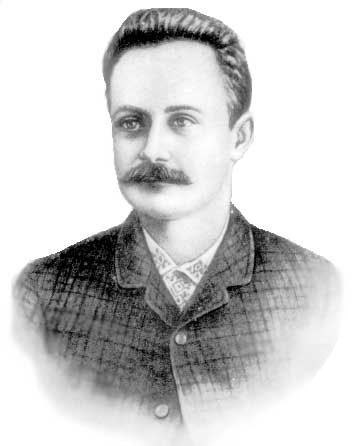 Eventually
progressive nationals abandoned their support for government and in 1900
joined with the radicals to form National Democratic Party. This party
included a distinguished historian M. Hrushevskyi a famous writer Ivan
Franko and a well known activist, ethnographer and lawyer, Wolodymyr
Okhrymowych, who was elected to the Austrian Senate in 1907.
Eventually
progressive nationals abandoned their support for government and in 1900
joined with the radicals to form National Democratic Party. This party
included a distinguished historian M. Hrushevskyi a famous writer Ivan
Franko and a well known activist, ethnographer and lawyer, Wolodymyr
Okhrymowych, who was elected to the Austrian Senate in 1907.
As result of all this political activity and competition, Ukrainian national
awareness and consciousness spread into wide masses of the population. There
were also big achievements in Ukrainian culture and science. A new crop of
journals appeared such as "Narod" (People), "Gazeta i Slovo" (Life
and Word), "Sloboda" (Freedom). A very popular daily newspaper "Dilo" (Deed)
was born. A notable collaborator and prolific contributor to these publications
was Wolodymyr Okhrymovych. Famous opera singer, Salomea Krushelnytska, started
her world career on the stage of the Lviv Opera in 1892.
The Shevchenko Association in Lviv was upgraded to a scientific association
in 1892 and in 1898 it was reformed to conform with academy of science standards.
Academics demanded permission to establish a separate Ukrainian university
in Lviv as only a limited number of subjects was conducted in Ukrainian in
the existing university. In literature the most prominent writer was Ivan Franko
(1856-1916), but there were also many other talents namely Vasyl Stefanyk and
Olena Koblyansjka. Many high schools were created and an educational journal "Prosvita" (Enlightenment)
was published. To cater for physical culture there were sporting organizations "Sitch" (named
after the famous Zaporozhyan Cossack stronghold) and "Sokoly" (Falcons).
On economic front cooperatives and credit unions began to function thus reducing
reliability on Austrian and Polish institutions.
At the turn of the century, the ethnic conflict in Galicia deepened. Massive
peasant strikes against the Polish landlords occurred in 1902. Ukrainian students
engaged in demonstrations and clashes with the Poles, and in 1908 a student
assassinated the Galician governor.
EASTERN UKRAINE UNDER IMPERIAL RUSSIAN RULE
The people in eastern Ukraine and even the outwardly russianized intelligentsia
had not lost their love for Ukrainian ways of life, language and history. They
longed for the former glory of Cossacks and independence. In 1791, during adverse
relationships between Russia and Prussia, a Ukrainian nobleman Vasyl Kapyst
tried to enlist Prussian help in planned uprising against Russian oppression;
he did not succeed.
The situation improved somewhat after death of Tsarina Catherine in 1796. Her
son Pavlo, under sway of his minister and confidant of Ukrainian descent Oleksander
Bezborodjko, began to relax the Russian grip on Ukraine. There was even talk
about return of the former order, as during the hetman's times (Hetmanate).
Publications in the Ukrainian language began to appear. The first outstanding
literary work was "Aeneid" by Ivan Kotlarevskyi (1769-1838) published
in 1798; it was a humorous parody on this famous Roman epic, transposed to
the Cossack scene. Kotlarevskyi also wrote operettas "Natalka
Poltavka" and " Muscovite Sorcerer". Another noteworthy, contemporary
writer in Ukrainian language was novelist Hryhoriy Kvitka.
The cultural activities in Ukraine during 18th century were taking place mainly
in church circles. The literature generally contained scholastic and religious
disputes. The dramatic art was confined to morality plays. A noteworthy philosopher
was Hryhoriy Skorovoda (1722-1794).
After the assassination of Tsar Pavlo in 1801 his successor, Tsar Aleksander
I, began to revert to strict Russian rule. There were some hopes for a renewal
of the Hetmanate, in 1812 and later in 1831, when Cossack regiments were organized
to help with Russian warfare, but it did not eventuate. Russianization of Ukraine
continued.
However, many literary works, although written in Russian, reflected Ukrainian
customs, history and folklore. The most famous writer of such works was Mykolay
Hohol (Nikolai Gogol), author of "Sorochynskyi Fair", "Taras
Bulba" and many more. Among non fiction works of this period was book
about the history of Ukraine up to abolition of Hetmanate, by George Kosinskyi,
published in 1840. Also a book on Ukrainian grammar by Pavlowskyi appeared
about same time. Folk stories, songs and art became very popular subjects in
printed publications, which brought Ukrainian peasants and intelligentsia closer
together.
Clandestine societies called "hromadas" (communities) promoting Ukrainian
culture were being organized. Associated with Kyiv Hromada was Mykhaylo Drahomanov,
who advocated transformation of the Russian Empire into a federation of independent
states. A secret political association called the Brotherhood of Saints Cyril
and Methodius (formed in 1826) propagated social equality and freedom of thought,
conscience and speech. They also envisaged a federation of Slavic states under
the leadership of Ukraine.
Schools, universities and theaters began to develop. Books and journals appeared,
notably by professor at Kharkiv University (which opened in 1805) Petro Hulak-Artemovskyi,
ethnographer Amvroziy Metlynskyi and graduate Mykola Kostomariv, who later
became a famous historian. Still, the majority of books, although dealing with
Ukrainian matters, were published in the Russian language until the appearance
in 1840 of "Kobzar", a collection of poems by famous poet and painter
Taras Shevchenko (1814-1861).
Shevchenko, born a serf, was bought out of servitude by a group of artists
who recognized his talent for painting, but became famous mainly through his
poems. In his poems Shevchenko protested against injustices and suppression
of freedom in Ukraine, encouraged preservation of Ukrainian language and reminded
russianized descendants of Cossacks forgotten truth and glory of Ukrainian
past. His poetry reflected a conception of Ukraine as a free and democratic
society that had a profound influence on the development on Ukrainian political
thought. In 1845 Shevchenko worked at Kyiv University together with other prominent
activists for Ukrainian renaissance such as Maksymovych, Kulish and Kostomariv
(author of History of Cossacks).
Conditions deteriorated in 1847; members of Brotherhood of Saints Cyril and
Methodius, and many writers including Taras Shevchenko, were arrested, tried
and exiled and forbidden to write. They were not allowed to return till after
year 1850. Ukrainian reaction to Russian rule was renewed in 1850s, mainly
due to the return from exile by members of Brotherhood of St Cyril and writer
Kulish, who began to publish ethnographical material collected before his exile.
The new star of Ukrainian literature, Marko Vowchok published the journals "Khata" (Home)
and "Osnova" (Groundwork), (1860-1862). A group called Osnova promoted
the liberation of the peasants from serfdom and education, organized Sunday
schools and published Ukrainian textbooks. They defended Ukrainian history
and language from Russian and Polish influences. This movement even gained
support within some Russian circles.
In 1862, the St Petersburgh education committee recommended the introduction
of Ukrainian language into state schools. Russian writers became interested
in Ukrainian literature, especially in poems by Taras Shewchenko. However all
this came to a halt during a Polish uprising in 1863 when the Russian government
accused Ukrainians of supporting the Poles in their effort to gain independence
from Russia.
At the start of the 1870s the centre of the Ukrainian movement was in Kyiv,
where censorship was relaxed and which made literary and scientific activity
possible. Promoting Ukrainian sciences were Historian Antonovych and Drahomanov,
ethnographers Chubynsjkyi and Rudchenko, linguists Zhytetskyi and Mykhaljchuk.
In 1672 they founded a branch of Geographical Society in Kyiv, which became
the centre of Ukrainian culture. Talented writers such as Rudansjkyi, Nechuy-Levytskyi,
Myrnyi, Konysjkyi and Starytskyi represented Ukrainian literature. Mykola Lysenko
provided foundations for Ukrainian Music by his collection of songs and compositions
and by staging of many beautiful concerts.
Although all these activities were of cultural and scientific nature only,
avoiding political, or even social affairs, they did not escape the attention
of Ukrainian enemies. Government officials Regelman and Yusefovich kept complaining
to Russian authorities that promotion of Ukrainian language and literature
was a Polish and Austrian intrigue intended to separate Ukraine from Russia.
Consequently, a commission in 1875 instituted censorship of Ukrainian literature
and banned books from western Ukraine, except those published by Russophiles,
which supported Moscow. The Kyiv branch of the Geographical Society was closed
down and in 1876 came the ban on publication of books in Ukrainian language.
Thus cultural activities moved again west and centered on the Taras Shevchenko
Association, founded in 1873 in Lviv with help by Ukrainians from the east.
In Kyiv, to circumvent ban on Ukrainian language, a scientific and historical
journal, "Kievskaya Starina" (Ancient Kyiv), came out in 1882. It
was written in the Russian language but by Ukrainian authors and in the 1890s
included some articles in Ukrainian. The literature in Ukrainian language was
at first restricted to cheap popular novels but later more serious themes were
introduced by prominent authors such as Kotsubynsjkyi, Hrinchenko, Samiylenko
and Lesya Ukrainka (1871-1913). There was a strong development of Ukrainian
theater generated by plays based on folklore, notably by Kropyvnytskyi and
Karpenko-Karyi (Ivan Tobylevych) and performances by many talented actors.
Political activity accelerated toward the end of the century. Younger, primarily
student led hromadas became involved in politiical activities. One such group
in Kharkiv developed into the Revolutionary Ukrainian Party, which in a pamphlet
published in 1900 advanced a political goal of "one, single, indivisible,
free, independent Ukraine"
The ban by Russian authorities on Ukrainian language being used during meetings
and seminars intensified the struggle and political activity in defense of
the Ukrainian culture. In December of 1904 a special commission of ministers
concluded that the Ukrainian national movement does not constitute a serious
danger to Russia. In 1905 the cancellation of the ban on Ukrainian language
created great expectations for progress in cultural and political life. However
attempts in 1906 to advance the Ukrainian cause by some deputies in Russian
parliament (Duma) did not achieve any significant results. The anti-Ukrainian
attitude of the authorities hindered, but did not stop progress of Ukrainian
culture, education and economy.
The newspapers "Khliborob" (Bread Producer), "Hromadsjka Dumka"
(Community Thought), "Ridnyi Kray" (Native Country), "Selo" (Village)
and journals "Viljna Ukraina" (Free Ukraine) and "Nova Hromada" (New
Community) were being widely read. The creation of the Ukrainian Scientific
Association in 1907 assembled scientific forces of different disciplines.
The Ukrainian movement looked forward with confidence toward the future.
THE COSSACKS
The Cossack stronghold, Zaporozhian Sitch, was subservient to Moscow and was
utilized for raids on Crimea and Turkey. During the Turkish war, which started
in 1768, several thousand Cossacks supported the Russians in battles on land
and Sea. Eulogies from the Tsarina but little else and restrictions of Cossack
freedoms continued rewarded their efforts. Their lands were being colonized
by Russians, Serbians and other foreigners with an aim of creation of the so-called
Novorossiya or New Russia state in the south of Ukraine.
After end
of Turkish war in 1775, the Cossacks were being gradually disarmed and
in the Summer of that year, Russian general Tekeli surrounded the Cossacks
in the Sitch itself, with superior forces, and demanded the abandonment
of their fortress. Faced with such overwhelming odds, Cossack chief Kalnyshevskyj
surrendered. The Sitch was destroyed and abolished by Tzarist edict on
the 3rd of August 1775. Kalnyshevskyj and the other Cossack leaders were
exiled to Siberia.
The Cossack
lands were granted to Russian nobles. The Cossacks were told to disperse
and settle in towns and villages or to join the Russian forces. Many
Cossacks escaped and settled in Turkey near the Danube delta. In 1778
they were formally accepted under Turkish rule. By end of 1780 all districts,
which were formerly under the Hetmanate, were incorporated into the Russian
regime. In 1783 all Cossack regiments were transferred to the Russian
forces, peasants were prohibited to leave their landlords, which made
them serfs on their former land. Ukrainian church autonomy was abolished
and the church property was transferred to Russian treasury.
When the
Cossacks in Turkey, under pressure from Russian field marshal
Potemkin, were told to resettle further inland beyond the Danube river, many
of them returned home. Potemkin, in order to encourage this process to continue
and to discourage future exits of Cossacks from Ukraine, decided in 1783 to
organize the Cossacks under name of Black Sea Force. These Cossacks, after
another Turkish war in 1792, were resettled to Kubanj and were allowed to reestablish
their former system and customs. Other Cossacks settled in lands under Austrian
rule. The Cossacks, who remained in Turkey, were under constant pressure from
Russia to return. At the start of another Turkish war in 1828 Cossack chief
Osyp Hladkyj decided to go over to the Russian side and many Cossacks followed
him. After the war they at first settled near Mariupol on coast of Azov Sea
and in the 1860s resettled in Kubanj. Cossacks, who remained in Turkey were
dispersed, as reprisal for betrayal by Osyp Hladkyj.
j.
![]()
The country was reconquered and experienced a Soviet rule that engineered two genocidal famines (1921-1922 and 1932-1933) - known as the Holodomor - in which over 8 million died. In World War II, Nazi German and Soviet armies were responsible for some 7 million more deaths. However, after the WWII, Ukraine borders where extended to the West by shifting Poland, see Curzon line, and to the East by acquiring Crimea. Renewed independence was achieved in 1991 with the collapse of the Soviet Union and Ukraine was a founding member of the Commonwealth of Independent States.